What is Biofeedback?
“Biofeedback is a technique you can use to learn to control your body’s functions . . . you’re connected to electrical sensors that help you receive information (feedback) about your body (bio) . . . In essence, biofeedback gives you the power to use your thoughts to control your body, often to improve a health condition or physical performance.” (MayoClinic.org)
Types of Biofeedback
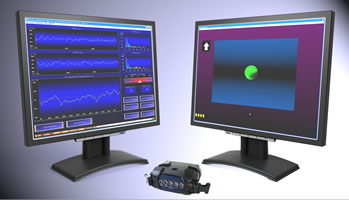 Using the research-grade Nexus™ system, we provide a wide range of biofeedback modalities to address the unique ways your body and brain are affected by stress and reflect various symptoms.
Using the research-grade Nexus™ system, we provide a wide range of biofeedback modalities to address the unique ways your body and brain are affected by stress and reflect various symptoms.
First, a multi-modal psychophysiology assessment is conducted to measure your body’s responses to mild stressors. From this data, we ascertain the specific types of biofeedback that may be needed. The results of biofeedback encompass many areas of life, from emotional wellbeing, reduced stress (and its many mental and physical effects), to improved athletic and cognitive performance.
Brainwave (EEG)
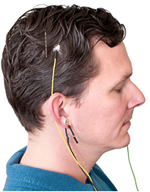 EEG biofeedback is often referred to as neurofeedback. Brainwaves are trained to achieve reduction in brain-based symptoms or to improve cognitive performance.
EEG biofeedback is often referred to as neurofeedback. Brainwaves are trained to achieve reduction in brain-based symptoms or to improve cognitive performance.
Blood flow
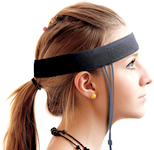 Blood flow in the arteries of the brain is important for optional functioning. The level of blood flow and oxygen content is an indicator of brain activation. Hemoencephalography (HEG) biofeedback is used to train blood flow to improve attention and focus. In addition, some headache conditions respond well to blow flow biofeedback.
Blood flow in the arteries of the brain is important for optional functioning. The level of blood flow and oxygen content is an indicator of brain activation. Hemoencephalography (HEG) biofeedback is used to train blood flow to improve attention and focus. In addition, some headache conditions respond well to blow flow biofeedback.
Breathing
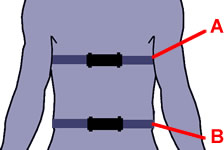 Our breath rate says a lot about our stress level. Fast, shallow breathing from the chest (A) is not only a stress reaction, but sends a message to the brain and heart that things are not OK, which only reinforces a state of anxiety. Respiration biofeedback trains a slower, abdominal (B) form of breathing which is stress-reducing and healthy.
Our breath rate says a lot about our stress level. Fast, shallow breathing from the chest (A) is not only a stress reaction, but sends a message to the brain and heart that things are not OK, which only reinforces a state of anxiety. Respiration biofeedback trains a slower, abdominal (B) form of breathing which is stress-reducing and healthy.
Heart rate
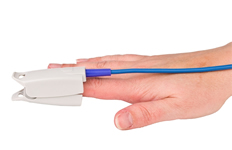 When we are stressed or anxious, our heart rate increases and heart rate variability (HRV) diminishes. Extensive research continues to show the benefits of increasing HRV for physical and mental health. HRV biofeedback trains a healthy connection between heart rate and breath rate.
When we are stressed or anxious, our heart rate increases and heart rate variability (HRV) diminishes. Extensive research continues to show the benefits of increasing HRV for physical and mental health. HRV biofeedback trains a healthy connection between heart rate and breath rate.
Muscle
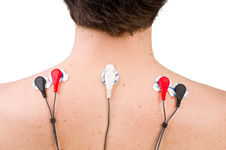 Tensed muscles both cause and maintain chronic pain, which is typically in the back, shoulders and neck. The tension may not even be perceptible to us. Certain types of headaches are the result of excess or prolonged muscle tension. Muscle tension (EMG) biofeedback trains a deeper state of muscle relaxation than can be achieved by conscious relaxation alone.
Tensed muscles both cause and maintain chronic pain, which is typically in the back, shoulders and neck. The tension may not even be perceptible to us. Certain types of headaches are the result of excess or prolonged muscle tension. Muscle tension (EMG) biofeedback trains a deeper state of muscle relaxation than can be achieved by conscious relaxation alone.
Sweat glands
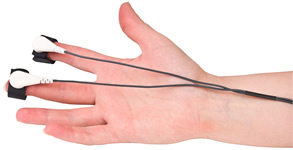
As stress increases, tiny sweat glands in our skin react with increased perspiration. The result is clammy hands, which may be barely perceptible. Sensors placed on the fingers record this action by measuring skin conductance (SC). SC is highly reactive to mental states and clients are often surprised with the speed with which a single thought can cause a sudden rise in SC. Skin conductance biofeedback trains down this reactivity and teaches us to inhibit the stress response that may result from anxiety or stress, and therefore reducing these symptoms.
Temperature
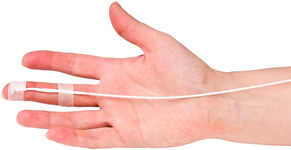 Ever notice that your hands are cold when you are in a stressful situation? This is the result of the body’s survival mechanism of reducing blow flow to the extremities when there is a perceived threat. Though we no longer live in the stone age, this stress response continues as a constant state for many people, with its damaging results on immune system function. Skin temperature biofeedback, using a highly sensitive temperature sensor on a finger tip, can be a powerful way to reverse the stress response and associated symptoms. Research has also show the value of skin temperature biofeedback for migraines and Raynaud’s syndrome (also known as white finger syndrome).
Ever notice that your hands are cold when you are in a stressful situation? This is the result of the body’s survival mechanism of reducing blow flow to the extremities when there is a perceived threat. Though we no longer live in the stone age, this stress response continues as a constant state for many people, with its damaging results on immune system function. Skin temperature biofeedback, using a highly sensitive temperature sensor on a finger tip, can be a powerful way to reverse the stress response and associated symptoms. Research has also show the value of skin temperature biofeedback for migraines and Raynaud’s syndrome (also known as white finger syndrome).
